Two weeks ago, I picked up the Canyon Roadlite:ONfly CF - a sleek, carbon-framed fitness e-bike that’s almost too subtle for its own good. I’ve since clocked daily 40-minute rides and started using it for 8km gym commutes. In that time, I’ve grown to admire the ride, tolerate the quirks, and nitpick the hell out of the details - because that’s what this bike deserves.
First, the Setup

Two weeks ago, I picked up the Canyon Roadlite:ONfly CF - a sleek, carbon-framed fitness e-bike that’s almost too subtle for its own good. I’ve since clocked daily 40-minute rides and started using it for 8km gym commutes. In that time, I’ve grown to admire the ride, tolerate the quirks, and nitpick the hell out of the details - because that’s what this bike deserves.
The Specs That Matter

Price (EU): ~€4,999 (standard build)
Weight: 15.14 kg (size M, without pedals)
Frame: Carbon fiber, flat-bar geometry, full internal cable routing
Fork: Canyon FK0094 carbon fork with VCLS comfort technology
Motor: Fazua Ride 60 – 250W nominal, 450W peak, 60Nm torque
Battery: 430Wh SRAM Energy battery (removable), Fazua-compatible rail system
Drivetrain: SRAM GX Eagle AXS wireless 12-speed
Front: 38T chainring
Rear: 10–52T cassette
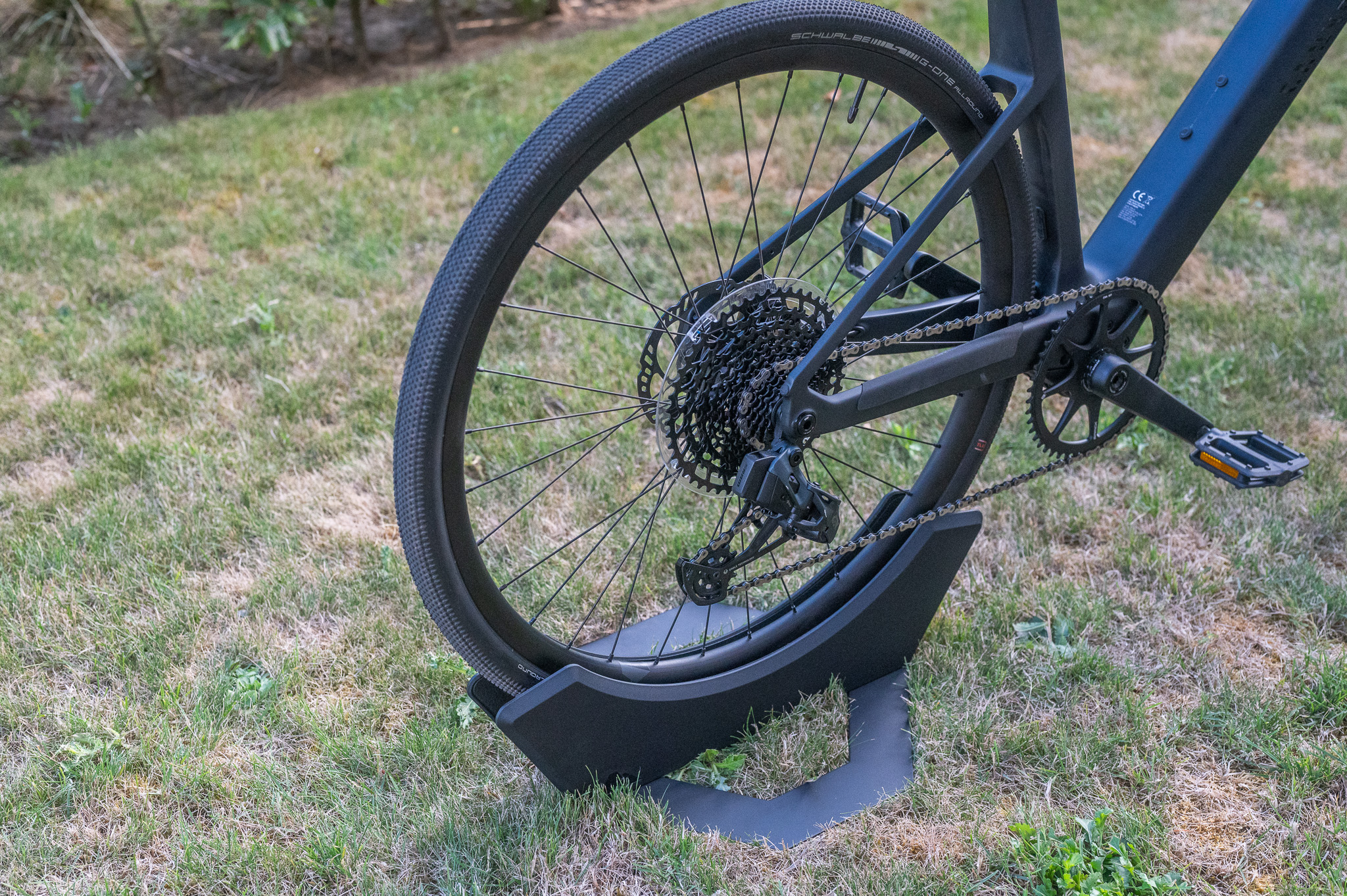
Crankset: SRAM X1 Eagle Carbon
Brakes: Magura MT4 hydraulic disc brakes with 160mm MDR-C rotors
Wheels: Alexrims GX26P, 622×19, paired with Shimano TC500 hubs
Tires: Schwalbe G-One Allround 35mm, tubeless-ready
Handlebar & Stem: Canyon CP0043 carbon integrated cockpit
Saddle: Selle Royal VIVO
Lights:
Front: LightSkin Ultra Mini
Rear: Supernova TL3 PRO with brake-light function
Connectivity:
Fazua app for motor customization and metrics
SRAM AXS app for drivetrain settings
Canyon app (limited functionality)

Unboxing and Assembly
Unboxing the Canyon Roadlite:ONfly CF was refreshingly easy. Canyon ships the bike about 90% assembled — all the major components (rear wheel, drivetrain, cockpit, brakes) are already set up. You just need to:
Mount the front wheel
Install and align the cockpit (integrated bar/stem combo)
Attach pedals
Inflate tires and tweak saddle height
Canyon includes all the necessary tools in the box — no digging through your garage for hex keys or torque wrenches. Even the torque specs are printed clearly, which I appreciated.
Total time from box to rolling: ~30 minutes. No bike shop needed, and no surprises.
The only thing I’d recommend: do the final adjustments outside or in a bright space — the matte black finish is beautiful, but it’s hard to see fine alignment details in low light.
First Impressions
This bike is a stunner. The matte stealth black finish and integrated cockpit give it a futuristic edge. People constantly ask if it’s even an e-bike. The cables are completely hidden, the battery sits flush in the downtube (well, almost), and there’s zero branding clutter.
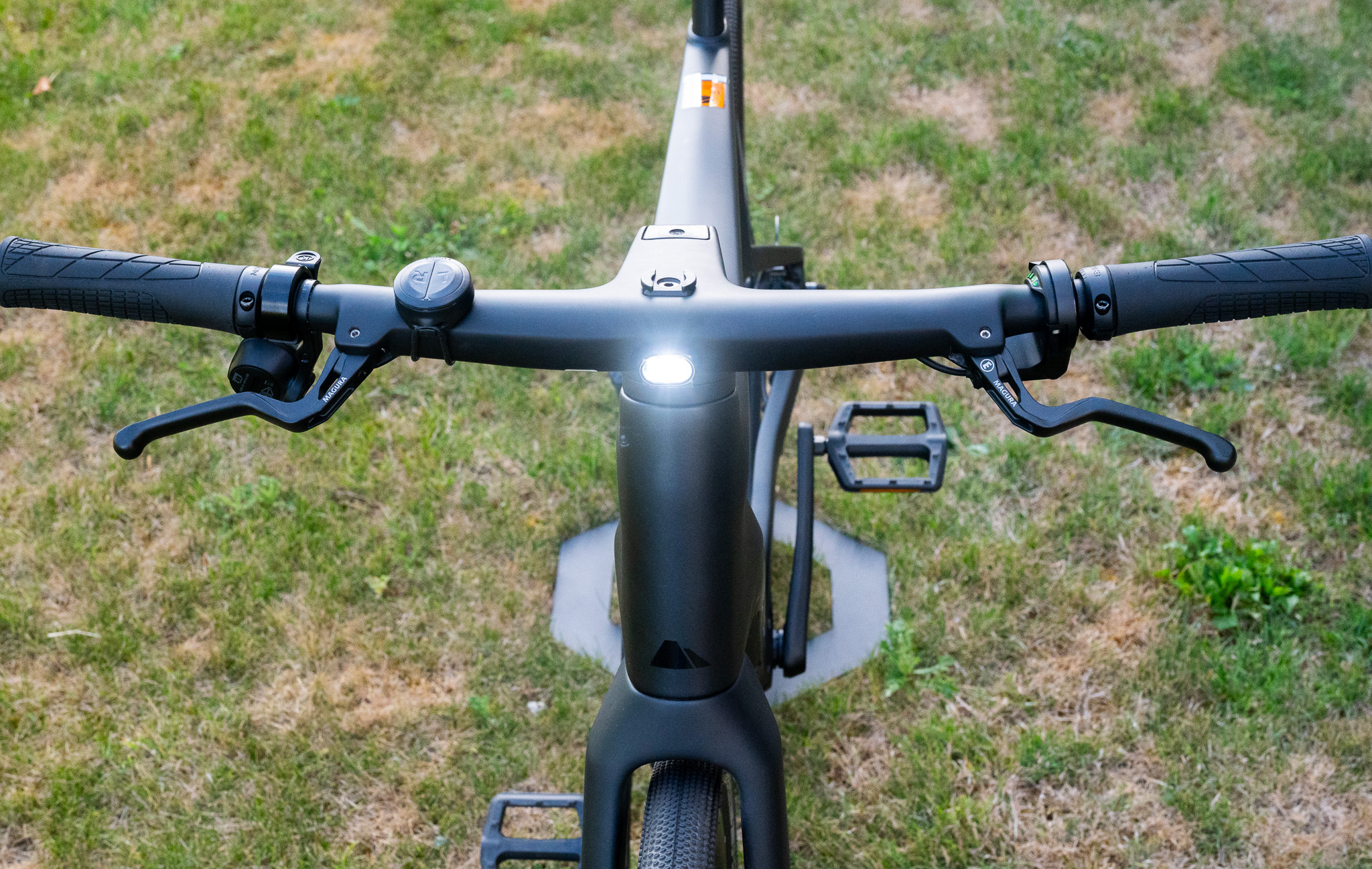
Picking it up, you’re immediately struck by how light it is for an e-bike. At just over 15 kg, it’s easy to lift into an apartment or over a shoulder if needed. That weight savings pays off every time you ride without assist and you will, because it rides beautifully even with the motor off.
P.S.: If you're wondering what those controls on the right side are — they're from Lumos Helmet and control the turn indicators in the helmet.
Riding Experience
Let’s be clear: this isn’t a comfort cruiser. This is a flat-bar fitness bike with carbon stiffness, urban agility, and just the right sprinkle of electric assist. If you’ve ever wished your gravel bike had stealth turbo legs, this is that in commuter form.
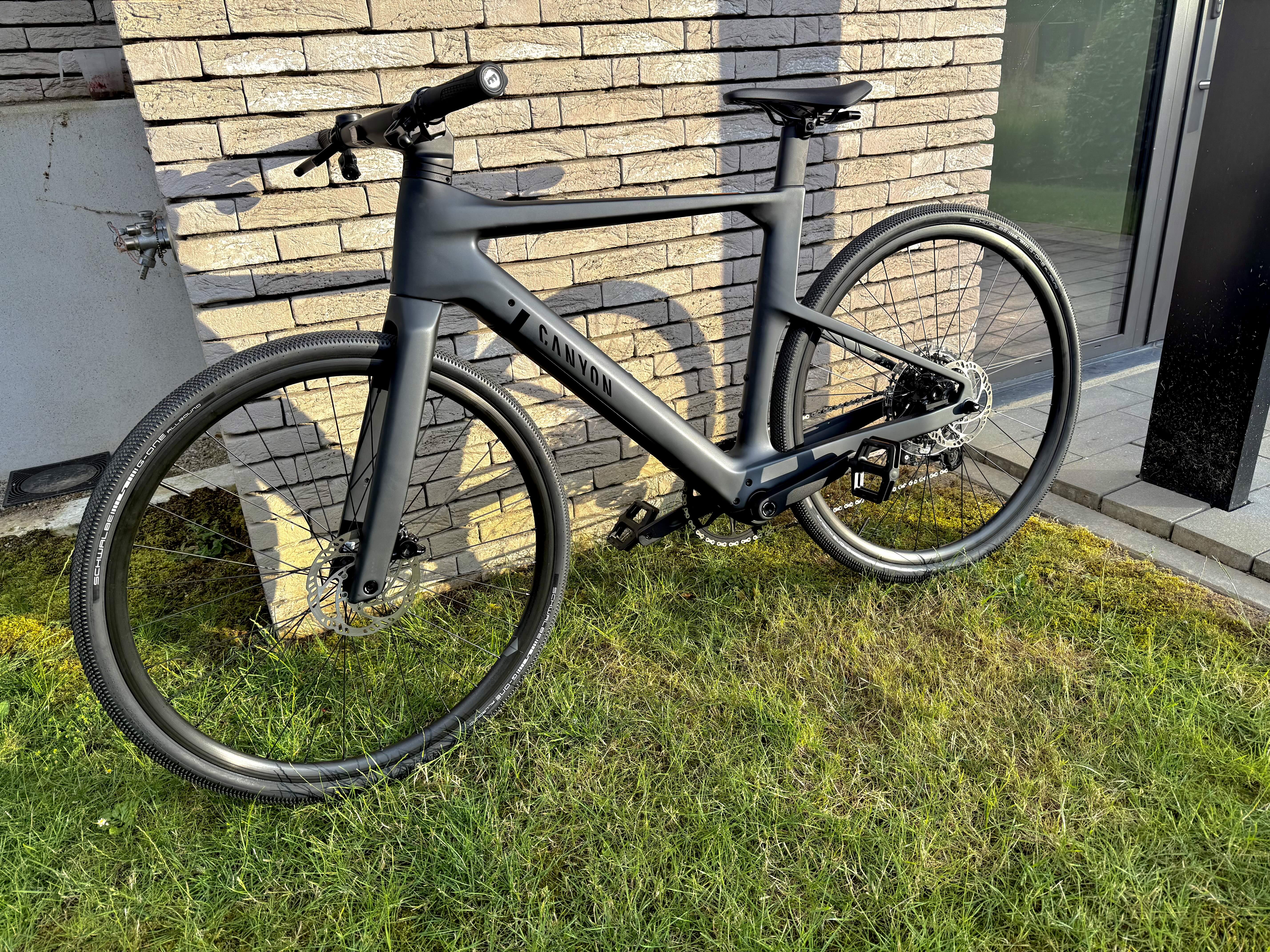
I ride almost exclusively in “Breeze” mode (lowest assist), which feels like having a persistent tailwind. Climbing is casual, accelerating from lights is fun, and you can still get a proper workout. “River” and “Rocket” modes are available if you need more punch, I rarely do.
Handling is sharp, stable, and confident. The carbon fork and wide-ish tires (35mm) soak up road chatter better than expected. On smoother pavement, the ride borders on buttery.
The Motor and Battery - Mostly Great
The Fazua Ride 60 system is a major upgrade over the older Evation units. It’s quiet, responsive, and avoids the jerky power delivery you sometimes find on hub motor bikes. Torque is ample for hills, and the 450W peak output in Rocket mode gives serious zip when you want it.
Battery life? I get 3–4 days of 40-minute rides on a charge in Breeze mode. That’s about 70–90 km of real-world range depending on terrain and assist level.
But here’s the rub...
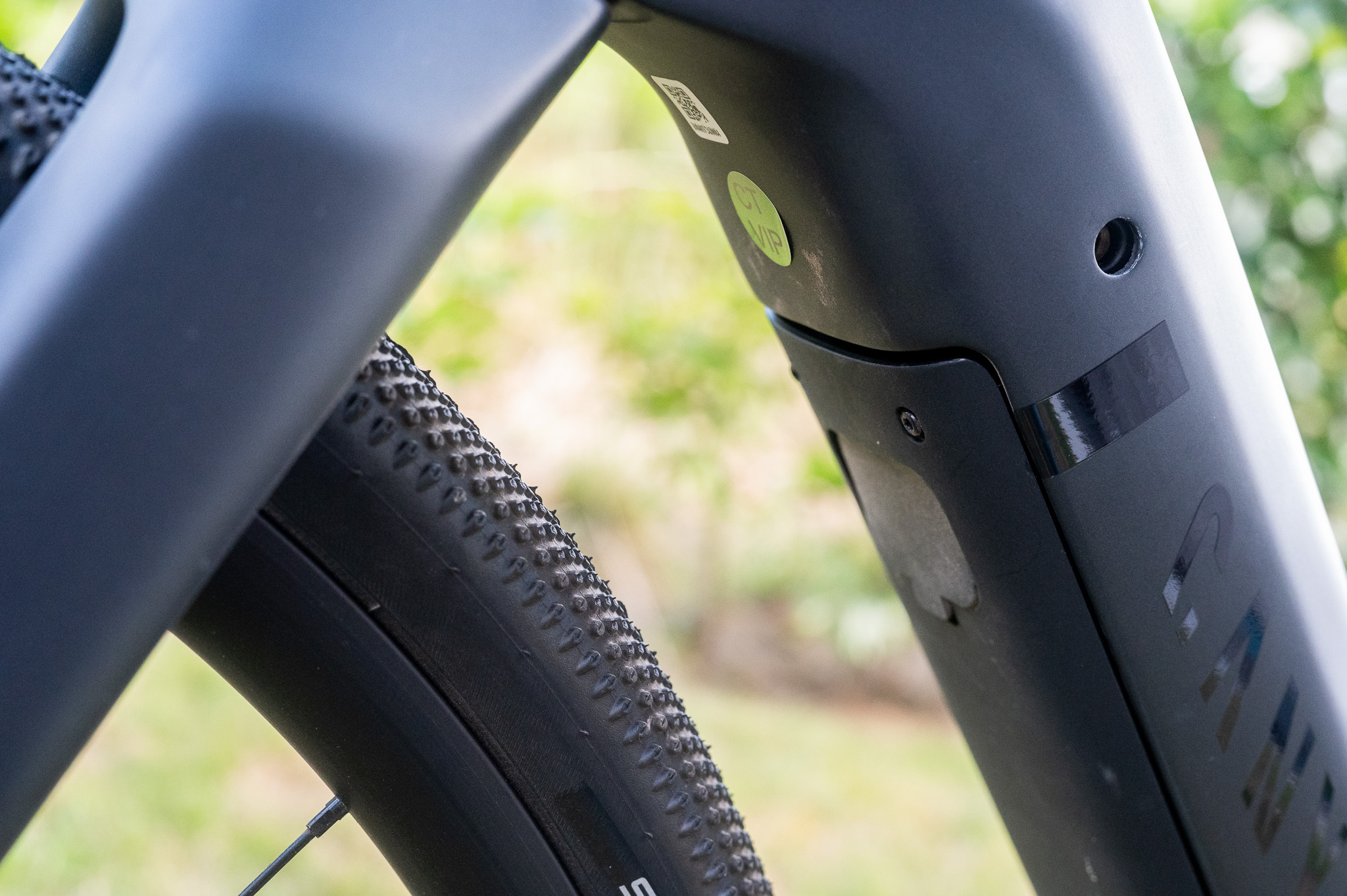
The battery latch system is embarrassingly under-engineered. There’s a noticeable panel gap where the battery meets the frame, and the flimsy plastic flap that covers the release feels like an afterthought. Every time I remove the battery, I flinch a little. For a €5K bike, this part feels like a budget scooter.
App Hell: The One Place It Feels Dumb
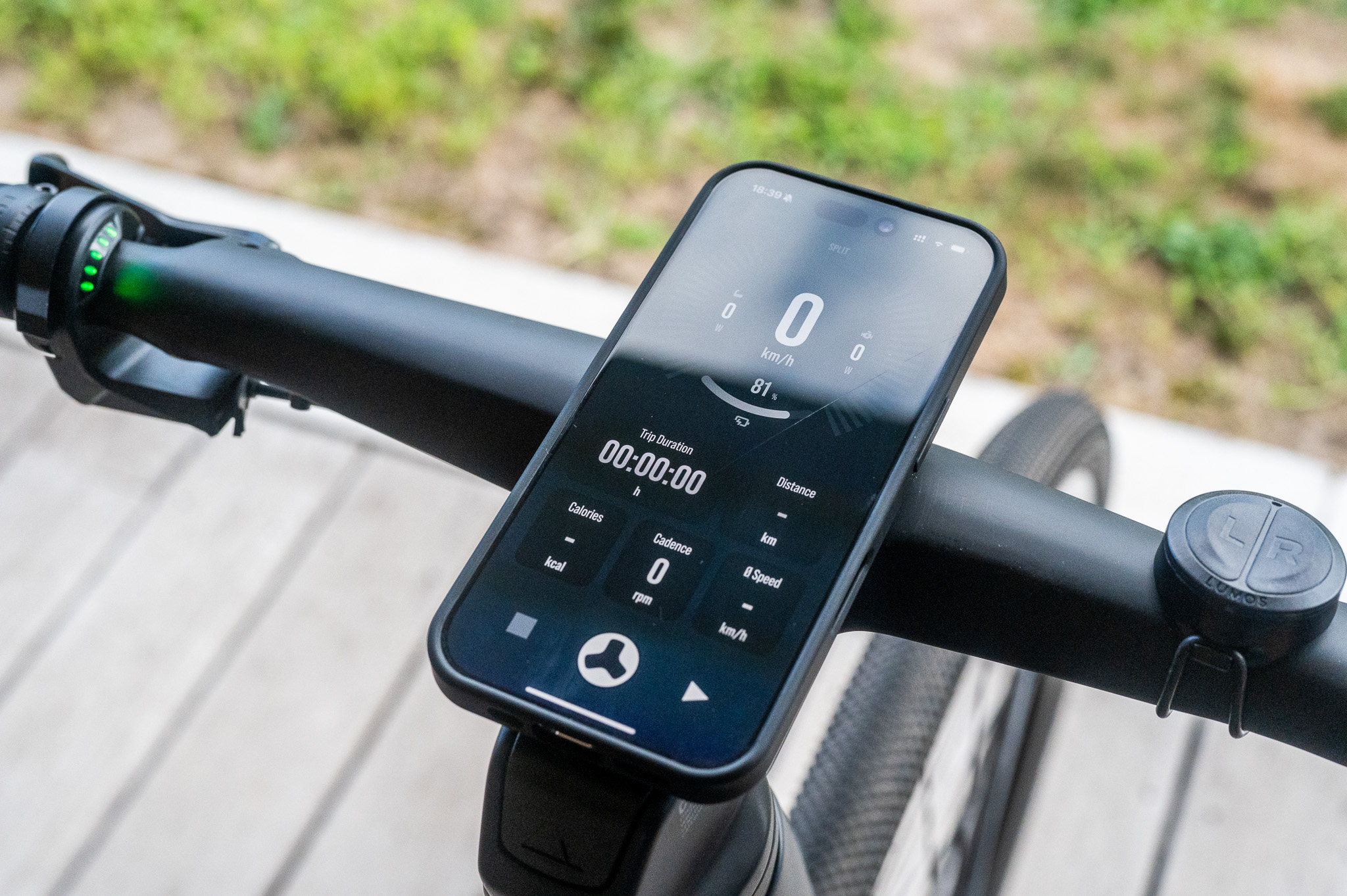
This bike needs three apps:
Fazua: motor settings, assist customization, metrics
Canyon: basically branding fluff
SRAM AXS: shifting diagnostics, battery status

They don’t talk to each other. No unified ride summary. No OTA updates through one portal. If this were a Specialized or Bosch setup, it’d all live in one clean interface. Canyon’s ecosystem is sleek in hardware — but the digital UX feels half-baked.
P.S.: I'm using Canyon recommended SP Connect Phone Mount and Phone Case
Fit, Geometry, and Use Case
This is a rider’s bike. The geometry puts you slightly forward - more aggressive than an upright city bike, but relaxed enough for comfort. The carbon integrated cockpit is clean and comfy, though not adjustable.
It fits best in the following use cases:
Urban fitness: fast loops, tempo rides, HIIT sessions
Commute-lite: trips to the gym, work, or local errands
Light touring or day trips: if you can rig fenders and a bag
But beware:
No OEM fenders available yet
No kickstand compatibility
No rear rack mounts
It’s a near-perfect fair-weather commuter and workout tool — but don’t expect it to double as a cargo hauler or winter warrior (yet).
What I Love
✅ Looks incredible ✅ Rides like a fast analog bike ✅ Carbon everything = light + quiet + stiff ✅ Low assist = high engagement ✅ SRAM AXS shifting is flawless ✅ Motor is silent and smart
What I Don’t
❌ Battery flap is a design fail ❌ Panel gap is an eyesore ❌ Assist switch feels cheap ❌ No unified app experience ❌ Missing basics like fenders and stand
Verdict: A Premium Rider's E-Bike with a Mid-Tier User Experience
If you value the ride above all else - smooth handling, featherweight frame, subtle assist — the Roadlite:ONfly CF is one of the most satisfying e-bikes you can buy. It’s a true rider’s bike, with the legs to turn every commute into a short training session.

Just be prepared for a few compromises in user experience. For €4,999, I expected better in areas like app integration, fit-and-finish on the battery housing, and commuting practicality. But the core riding experience? That’s as dialed as it gets.
Update: 30km Loop Test
Took the Roadlite:ONfly CF out on a 30km loop today — and it only confirmed what I suspected: this bike absolutely wants to be ridden longer and harder. The assist is consistent, with no weird cutouts or lag, and the ride feels natural even when I’m pushing over 25 km/h (the EU speed limit for assist).
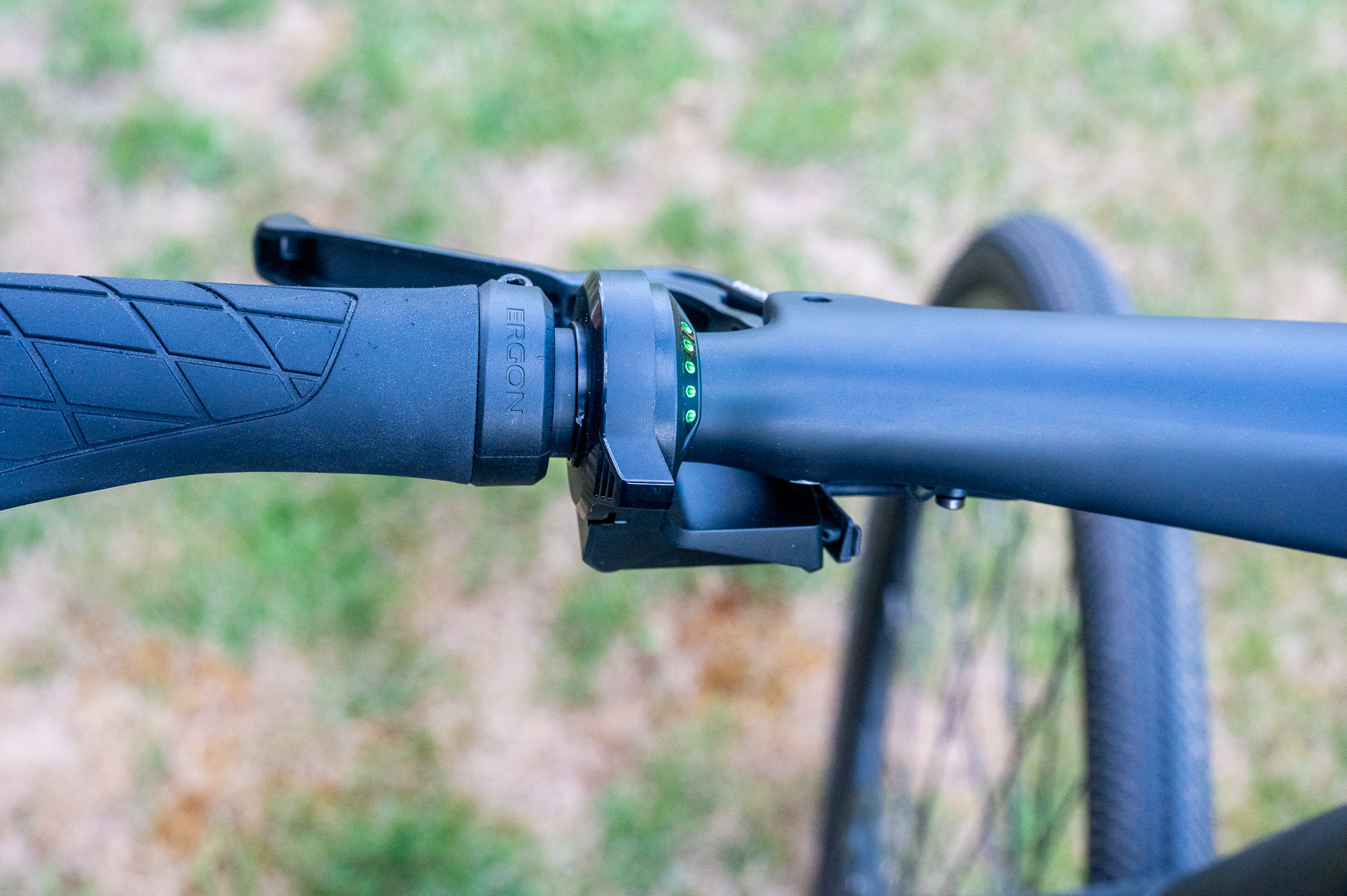
One annoyance reared its head again: the assist/light switch. It’s a single rocker that controls both motor modes (up/down) and lighting (left/right). Feels a bit toy-like, and worse, it’s easy to misclick. I accidentally turned on the lights mid-ride without realizing. In bright daylight, the light indicator isn’t very visible — and there’s no haptic feedback. Canyon could’ve done better here.
